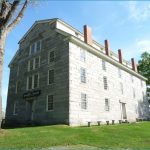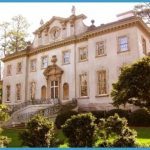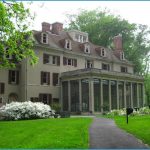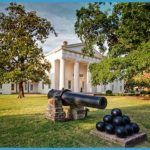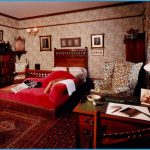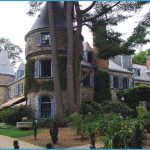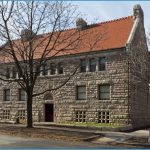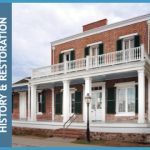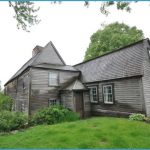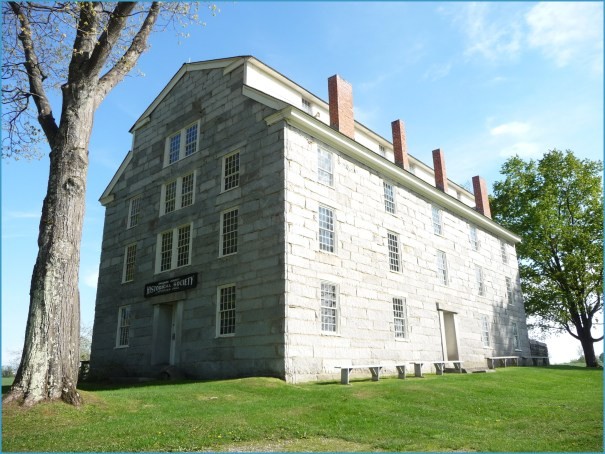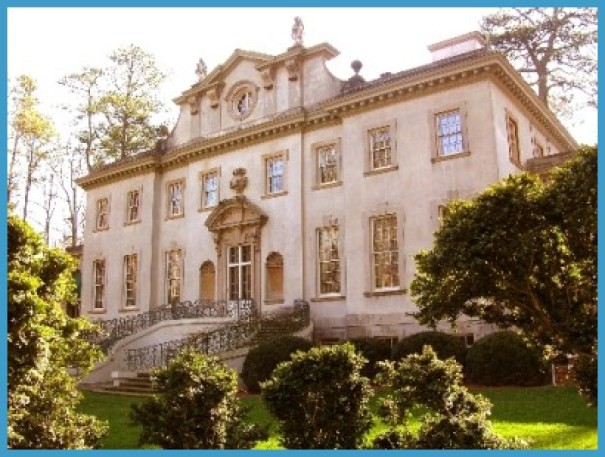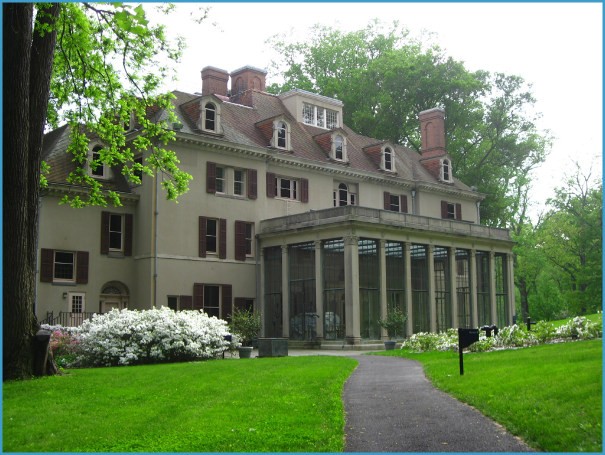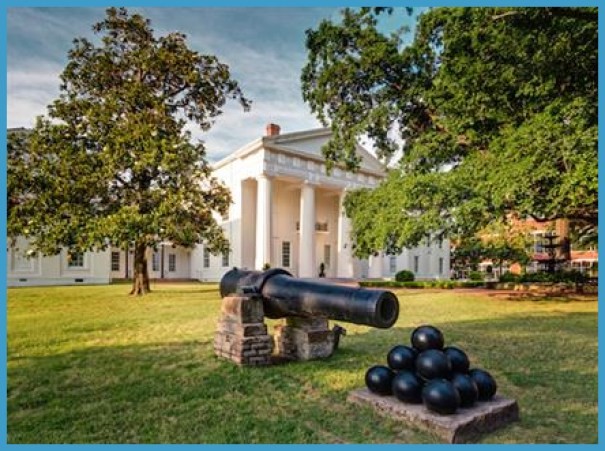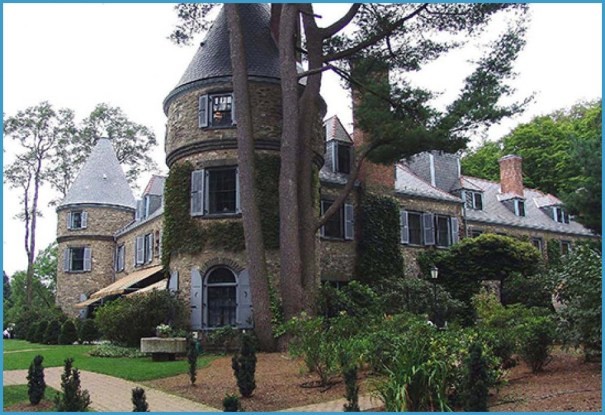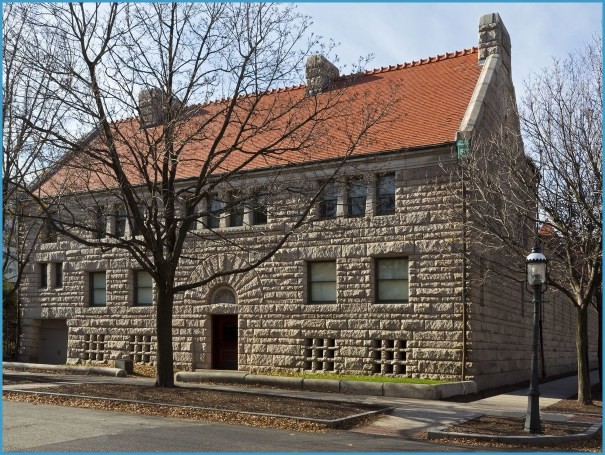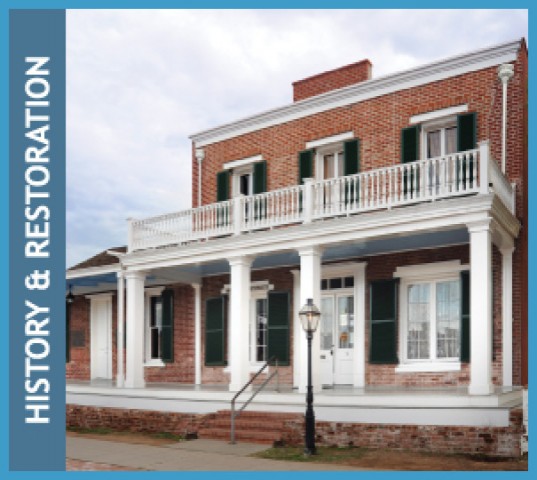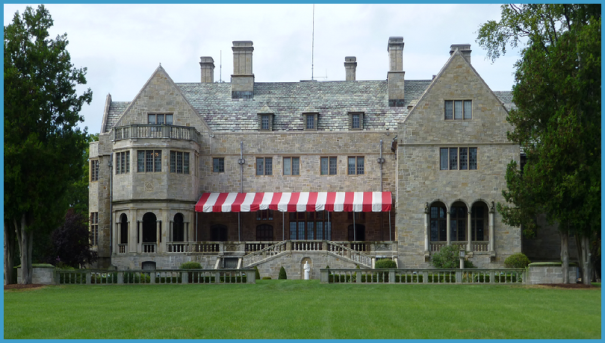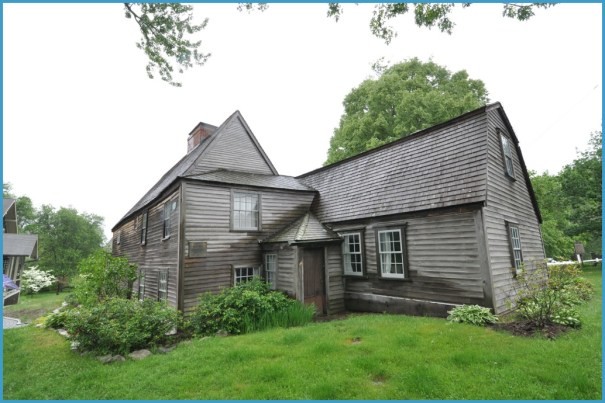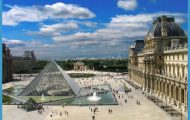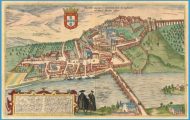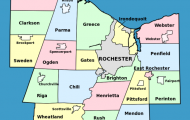The following are among the most prominent historic house museums in the
United States that are open to the public:
Arlington House (McLean, VA; www.nps.gov/arho/index.htm)
• Arlington House was the home of the Robert E. Lee family for nearly thirty years prior to the Civil War. Located in Arlington National Cemetery and now known as the Robert E. Lee Memorial, Arlington House sits in the middle of what was once a 1,100-acre plantation owned by George Washington Parke Custis. His only surviving child, Mary Anna Randolph Custis, married Robert E. Lee in 1831.
• Number of annual visitors: 800,000 to one million
Belle Meade Plantation (Nashville, TN; www.bellemeadeplantation.com)
• Belle Meade is an antebellum home on a property formerly used as a thoroughbred horse farm. The plantation, which once encompassed 5,300 acres, now includes a historic house museum, an original stable, a dairy, a winery, and a restaurant.
• Number of annual visitors: 350,000
Biltmore (Asheville, NC; www.biltmore.com)
• Built by George W. Vanderbilt II in 1889-1895, Biltmore is the largest privately owned home in the United States, with 250 rooms and 135,000 sq. ft. of living space. Biltmore was designed by Richard Morris Hunt; Frederick Law Olmsted planned the grounds.
Historic House Museums in USA Photo Gallery
• Number of annual visitors: 1,000,000
Ca’ d’Zan (Sarasota, FL; www.ringling.org/ca-dzan)
• Ca d’Zan Mansion was the Florida home of circus magnate John Ringling and his
wife, Mable. Purported to be the last of the Gilded Age mansions built in the United States, the 36,000 sq. ft. home overlooks the waters of the Sarasota Bay.
Fair Lane (Dearborn, MI; www.henryfordestate.org)
• Fair Lane was the family home of Clara and Henry Ford from 1915 until 1950. Upon Clara’s death, it was given to Ford Motor Company, then to the University of Michigan. Henry Ford Estate Inc. a nonprofit, is now restoring the house and grounds.
• Closed for restoration.
Fallingwater (Mill Run, PA; www.fallingwater.org)
• Fallingwater was designed by architect Frank Lloyd Wright in 1935 in rural southwestern Pennsylvania, 43 miles southeast of Pittsburgh. Built partly over a waterfall, the house is considered one of Mr. Wright’s greatest masterpieces. Fallingwater was the weekend home for the Edgar Kaufmann family from 1937 to 1963. The house was donated to the Western Pennsylvania Conservancy in 1963 and opened to the public as a museum.
• Number of annual visitors: 150,000
Fenway Court (Boston, MA; www.gardnermuseum.org)
• Fenway Court, the home of the Isabella Stewart Gardner Museum, now houses an art collection of world importance. The museum hosts exhibitions of historic and contemporary art, as well as concerts, family and community programs, and changing courtyard displays.
• Number of annual visitors: 200,000
Frederick C. Robie House (Chicago, IL; http://cal.flwright.org/tours/robie)
• The Frederick C. Robie House is the most-visited among several houses in the Chicago area designed by architect Frank Lloyd Wright. Located adjacent to the University of Chicago campus, it was designed and built between 1908 and 1910 and is renowned as the greatest example of the Prairie School style, the first architectural style that was uniquely American.
• Number of annual visitors: over 100,000
Frick Collection and Mansion (New York, NY; www.frick.org)
• The Henry Clay Frick House on the Upper East Side in New York City houses the art collection of industrialist Henry Clay Frick. The Frick Collection is recognized as one of the pre-eminent small art museums in the United States, with a collection of old master paintings and fine furniture housed in six galleries within the former residence.
• Number of annual visitors: 275,000 to 300,000
Gillette Castle (East Haddam, CT; www.ct.gov/dep/cwp/view.asp?A=2716&Q=325204)
• William Hooker Gillette, a noted actor, built this 184-acre estate, the Seventh Sister,
atop the most southerly hill in a chain known as the Seven Sisters. The residence is a 24-room mansion reminiscent of a medieval castle.
• Number of annual visitors: 300,000
Graceland (Memphis, TN; www.elvis-presley.com)
• Graceland, a large mansion with a white-columned portico, was home to Elvis Presley. The 13.8-acre estate currently serves as a museum.
• Number of annual visitors: 600,000
Hearst Castle (San Simeon, CA; www.hearstcastle.org)
• La Cuesta Encantada (The Enchanted Hill), popularly known as Hearst Castle, was the estate of newspaper magnate William Randolph Hearst. It was designed by architect Julia Morgan. The Hearst Corporation donated the property to the state of California in 1957. Since that time it has been maintained as a state historic park.
• Number of annual visitors: one million
Hillwood (Washington, DC; www.hillwoodmuseum.org)
• Hillwood Estate, Museum & Gardens is the former 25-acre estate of Marjorie Merriweather Post, heir to the Post cereal fortune. Opened to the public in 1977, Hillwood is privately operated.
• Number of visitors: Limited to 250 per day
Huntington Library (San Marino, CA; www.huntington.org)
• Huntington Library, Art Collections, and Botanical Gardens is a collections-based educational and research institution established by Henry and Arabella Huntington in their former residence.
• Number of visitors: 660,640
Kykuit (Tarrytown, NY; www.hudsonvalley.org/historic-sites/kykuit)
• Kykuit was home to John D. Rockefeller, founder of Standard Oil. The 40-room mansion and estate are owned by the National Trust for Historic Preservation. Kykuit,’ Dutch for lookout,’ overlooks the Hudson River at Tappan Zee and gives a view of the New York City skyline 25 miles to the south.
• Number of annual visitors: 243,000
Lockwood-Mathews Mansion (Norwalk, CT; http://lockwoodmathewsmansion.com)
• Lockwood-Mathews Mansion was built by financier and railroad baron LeGrand Lockwood between 1864 and 1868. The 62-room mansion is regarded as one of the earliest and most significant Second Empire Style country houses in the United States and illustrates the beauty and splendor of the Victorian Era.
Lyndhurst (Tarrytown, NY; www.lyndhurst.org)
• Home of Jay Gould, Lyndhurst is one of America’s finest Gothic Revival mansions and a remarkable example of the Hudson River’s grand and historic estates.
Lyndhurst is owned and operated by the National Trust for Historic Preservation.
• Number of annual visitors: 57,000
Mansions of Fairmont Park (Philadelphia, PA; www.philamuseum.org/parkhouses)
• Seven historic houses have been moved within the grounds of Fairmount Park to offer a glimpse into the intriguing public and private lives of prominent Philadelphians just prior to and after the American Revolution. The houses, which are maintained as historic house museums, served as the rural summer villas for well-to-do families during the 18th and early 19th century. They are considered among the most significant architectural examples of this time period in the United States. Mount Pleasant is now an off-premise gallery of the Philadelphia Museum of Art in Fairmount Park. Other houses in the park include William Peters’s Belmont Mansion (1745), Hatfield House, Randolph House, Joshua Fisher’s The Cliffs (1753), Historic Strawberry Mansion, The Monastery, and the Woodford Mansion.
• Number of annual visitors: 18,000
Maymont (Richmond, VA; www.maymont.org)
• The former home of Major James H. Dooley, a wealthy Richmond lawyer and philanthropist, and his wife, Sallie, is the most-visited attraction in the Richmond area. In addition to the historic house museum, the 100-acre Victorian estate includes an arboretum, formal gardens, a carriage collection, native wildlife exhibits, a nature center, and children’s farm.
• Number of annual visitors: 527,000
Monticello (Charlottesville, VA; www.monticello.org)
• Monticello, the primary plantation of President Thomas Jefferson, is a World Heritage Site. The Palladian house was designed by Mr. Jefferson when he was 26 years old, and it is said that no other home in the United States more accurately reflects the personality of its owner than Monticello.
• Number of annual visitors: 447,000
Mount Vernon (near Alexandria, VA; www.mountvernon.org)
• Mount Vernon was the plantation home of George Washington, the first President of the United States. The Palladian-style mansion was constructed by George Washington in stages between 1758 and 1778 on land that had been in the family since 1674. In 1858, the house was saved from ruin by The Mount Vernon Ladies’ Association, a philanthropic organization which still owns and operates the estate.
• Number of annual visitors: over one million
Newport Mansions (Newport, RI; www.newportmansions.org)
• The Preservation Society of Newport County operates 10 properties: The Breakers, Marble House, The Elms, Rosecliff, Chateau-sur-Mer, Kingscote, Isaac Bell House, Green Animals Topiary Garden, Hunter House, and Chepstow. Among the collection are some of the grandest mansions in the United States.
• The Breakers is the grandest of Newport’s summer cottages’ and a symbol of the Vanderbilt family’s social and financial preeminence in turn of the century America. Cornelius Vanderbilt II commissioned architect Richard Morris Hunt to build The Breakers in 1893. Mr. Hunt also designed Marble House, the former summer home of Mr. and Mrs. William K. Vanderbilt, which was built between 1888 and 1892.
• Number of visitors: 650,000 generating $76 million in direct economic impact.
Oak Valley Plantation (Vacherie, LA; www.oakalleyplantation.com)
• Called the “Grande Dame of the Great River Road,” Oak Valley is famed for its magnificent alley of 300 year old live oak trees leading a quarter mile to the Mississippi River.
• Number of annual visitors: 215,000
Old Westbury Gardens (Old Westbury, NY; http://oldwestburygardens.org)
• Old Westbury Gardens is the former home of John S. and Margarita Grace Phipps. Completed in 1906 by the English designer George A. Crawley, the magnificent Charles II-style mansion is nestled amid 200 acres of formal gardens, landscaped grounds, woodlands, ponds, and lakes.
• Number of annual visitors: 80,000
Rosedown Plantation (St. Francisville, LA; http://rosedownplantationhome.com)
• Rosedown Plantation is located along a historic corridor in Louisiana dubbed Plantation Alley. Built by Daniel and Martha Barrow Turnbull in the 1830s, it encompasses 374 acres in St. Francisville and is one of the most intact, documented examples of a domestic plantation complex in the South. The main house is of the Federal Greek revival style with Grecian wings. It stands behind beautiful towering oak trees which form a canopy over the gravel road leading to the house.
• Number of annual visitors: 25,000
San Francisco Plantation (Garyville, LA; www.sanfranciscoplantation.org)
• San Francisco Plantation, known as “The Most Opulent Plantation House in North America,” sits on the east bank of the Mississippi River (Old River Road), 40 minutes from New Orleans. Constructed in 1849, the house exemplifies the Steamboat Gothic architectural style and contains one of the finest antique collections in the country.
• Number of annual visitors: 25,000
Springwood Estate (Hyde Park, NY; www.nps.gov/hofr/)
• The Home of Franklin D. Roosevelt National Historic Site (operated by the National Park Service) preserves Springwood, the birthplace, lifelong home, and burial place of the 32nd President of the United States.
• Number of annual visitors: 140,000
Taft Museum of Art (Cincinnati, OH; www.taftmuseum.org)
• The Baum-Longworth-Taft House, now the Taft Museum of Art, is one of the finest small art museums in the U.S. The building which houses the museum was built as a villa in 1820 for Martin Baum. Charles Phelps Taft, the half-brother of President William Howard Taft, and his wife, Anna Sinton Taft, lived in the house from 1873 until 1929. The Tafts were avid art collectors and turned their home into a museum.
The Governor’s Palace (Williamsburg, VA; www.colonialwilliamsburg.org)
• The Governor’s Palace in Williamsburg was the official residence of the Royal Governors of the Colony of Virginia. It was also home to two of Virginia’s postcolonial governors, Patrick Henry and Thomas Jefferson, until the capital was moved to Richmond in 1780. The Governor’s Palace burned down in 1781 and was reconstructed by the Colonial Williamsburg Foundation in the 1930s on its original site.
The Hermitage (near Nashville, TN; www.thehermitage.com)
• The Hermitage is the former plantation home of Andrew Jackson. It was opened to the public as a museum in 1889. It ranks as the fourth most-visited presidential house museum (after Mount Vernon, Monticello, and the Lincoln Home). The tomb of Andrew and Rachel Jackson is located in the Hermitage garden.
• Number of annual visitors: 180,000
The Shadows (New Iberia, LA; www.shadowsontheteche.org)
• Set among towering live oak trees draped with Spanish moss on the banks of Bayou Teche, Shadows-on-the-Teche is owned and operated by the National Trust for Historic Preservation. It was built in 1831-1834 for sugarcane planter David Weeks and his wife Mary C. Weeks.
• Number of annual visitors: 25,000
The White House (www.whitehouse.gov)
• The White House, the official residence and principal workplace of the President of the United States, has been the residence of every U.S. President since John Adams in 1800. President Thomas Jefferson first opened the White House for public tours, a tradition that is still practiced. Public tour requests must be submitted through one’s Member of Congress. The self-guided tours of the West Wing, the official workplace of the President, are managed by the National Park Service.
• Number of visitors: 231,627
Tryon Palace (New Bern, NC; www.tryonpalace.org)
• Tryon Palace is a circa-1950s reconstruction of the 1767 palace of the colonial royal governors of the Province of North Carolina.
• Number of annual visitors: 173,000
Whitehall (Palm Beach, FL; http://flaglermuseum.us)
• In 1902, the New York Herald proclaimed that Whitehall, Henry Flagler’s home in Palm Beach, was “more wonderful than any palace in Europe, grander and more magnificent than any other private dwelling in the world.” Commonly known as the Flagler Museum, the mansion was opened to the public in 1960.
• Number of annual visitors: 100,000
Winterthur (Winterthur, DE; http://winterthur.org)
• The former home of Henry Francis du Pont, Winterthur (pronounced “winter-tour”) is a premier museum of American decorative arts, has a 60-acre naturalistic garden that is among the country’s best, and houses a research library that serves scholars from around the world.
Vanderbilt Mansion National Historic Site (New Hyde Park, NY; www.nps.gov/vama)
• One of America’s premier examples of the country palaces built by wealthy industrialists during the Gilded Age, Frederick William Vanderbilt purchased the property in 1895 for use as a seasonal country residence. Situated on the east bank of the Hudson River, the site includes 211 acres of the original larger property historically named Hyde Park.
• Number of visitors (2013): 372,569
Vizcaya Museum and Gardens (Miami, FL; www.vizcayamuseum.org)
• Overlooking Biscayne Bay, Vizcaya was built by agricultural industrialist James Deering in 1916. It is now owned and operated by Miami-Dade County.
• Number of annual visitors: 250,000
The 2016 Readers Choice Awards poll by 10Best (www.10best.com), a USA
Today travel site, ranked the Best Historic Home Tours as follows:
1. Stan Hywet Hall & Gardens (Akron, OH)
2. Houmas House Plantation and Gardens (Darrow, LA)
3. Cairnwood (Bryn Athyn, PA)
4. Biltmore (Asheville, NC)
5. Meadow Brook Hall (Rochester, MI)
6. Oak Alley Plantation (Vacherie, LA)
7. Hearst Castle (San Simeon, CA)
8. Ca’ d’Zan (Sarasota, FL)
9. The Breakers (Newport, RI)
10. Lyndhurst (Tarrytown, NY)
The following links to a list of over 1,300 historic house museums: www.rkma.com/historichousemuseums.pdf.

